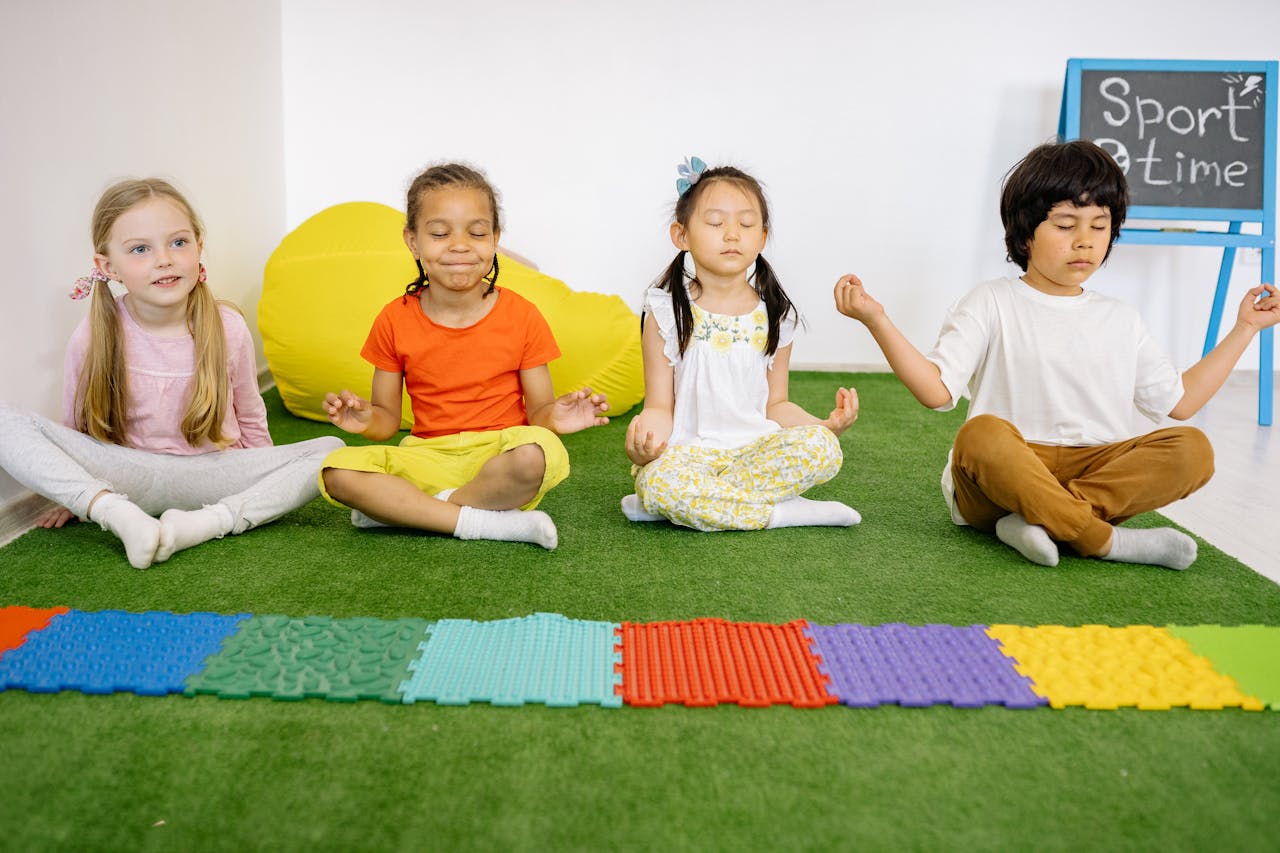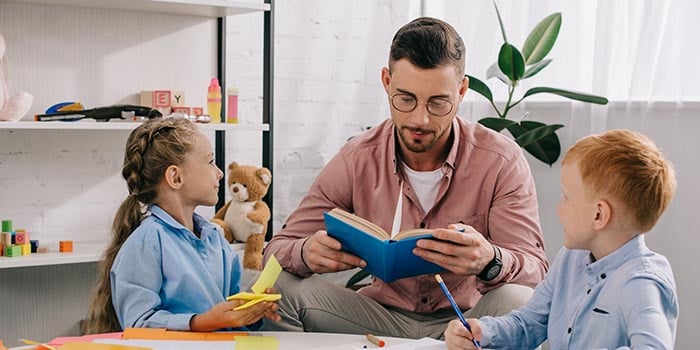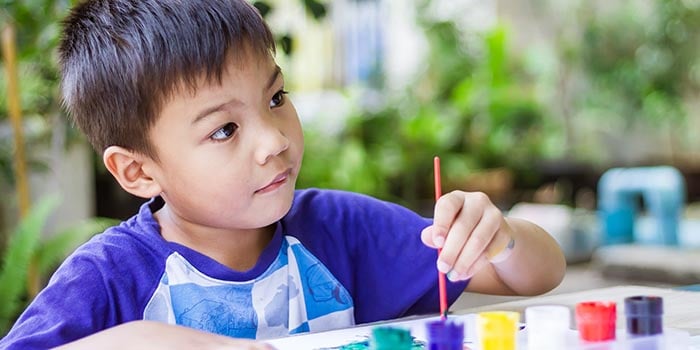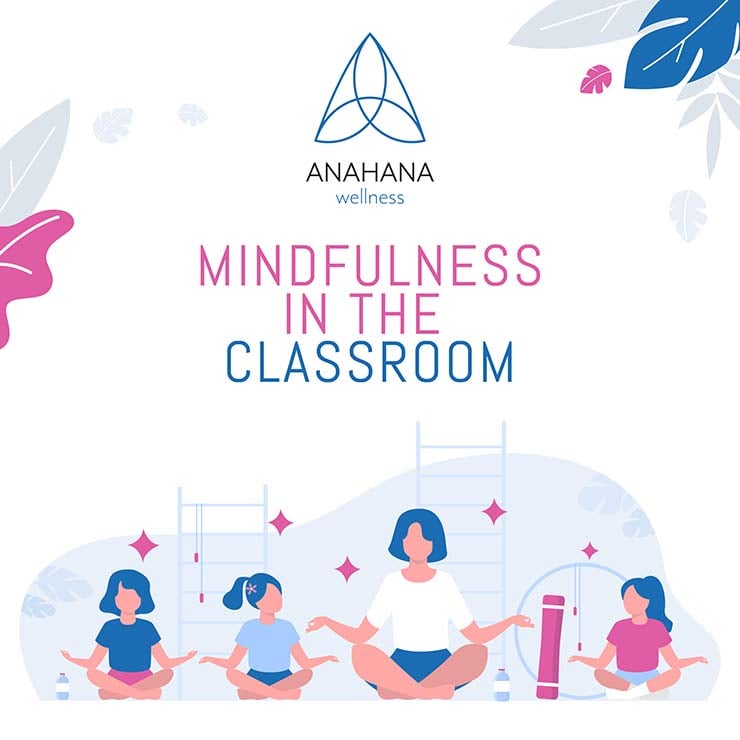6
Mindfulness in the Classroom
Last Updated: December 15, 2024

Table of Contents
What is mindfulness in the classroom? How can it help you and your children in today's society? Allow us to teach you more about what mindfulness involves and how implementing mindfulness can help your child or students get better at learning.
Key Takeaways
- Mindfulness in the classroom helps elementary school students and middle school students improve focus and self-awareness.
- Teaching mindfulness includes short mindfulness exercises like guided meditation to keep students calm and in the present moment.
- Mindfulness practice enhances academic performance and emotional well-being.
- Mindfulness training helps classroom teachers instill better behavior and self-awareness in students.
- Programs like Mindful Schools can support educators in teaching students how to practice mindfulness daily.
- Elementary students benefit from these tools, fostering resilience and growth.
What is Mindfulness in the Classroom?

To explain mindfulness in the classroom, we must first define the word mindfulness.
Jon Kabat-Zinn, professor of medicine at the University of Massachusetts Medical School and creator of mindfulness-based stress reduction (MSBR), has defined mindfulness as “the awareness that arises from paying attention, on purpose, in the present moment and non-judgmentally."
It’s a practice that aims to keep you in the present — fully engaged and not worried about the future or regretful about the past. A focus on the breath often plays a key role.
Teaching Mindfulness in the Classroom
You can practice mindfulness anytime, anywhere. However, practicing mindfulness in the classroom means engaging children by first teaching them what it is. Educational mindfulness activities for kids and mindfulness games for kids can help in this area. You might even consider purchasing mindfulness videos for kids. All the teachers should strive to incorporate this into the school's culture.
Once your elementary school students know what mindfulness training entails and adopt mindfulness skills, you can try your mindfulness practice together. Start small with mindfulness exercises that are just a few minutes long. Children in classroom settings can lose interest quickly, so you want to introduce a mindfulness program slowly to ensure full classroom participation.
Finally, after everyone has a general handle on the practice, you can try to engage students to be mindful in everything they do. Mindfulness can be promoted when eating, reading, playing outside, and doing daily classroom activities for kids. This will ensure healthy minds, improved mental health, less disruptive behavior in the classroom, and higher self-awareness. The children will become fully present during the entire school day.
The beautiful thing about mindfulness for kids is that it can be practiced with absolutely any activity.
Naturally, very few people can practice mindfulness all day long. Still, every bit counts!
Why is it Important?
As humans, most of us are constantly enveloped in our worries and anxieties — so much so that we often feel scatter-brained, preoccupied, tired, and stressed. The same goes for kids, and that’s why promoting mindful education is so important. We need to find a way to release ourselves from these spirals of thought.
Mindfulness is a counter to constant thinking, worrying, and ruminating because it allows our minds to be still and open. The only task at hand is to breathe and observe. We watch our living, sights and sounds, and feelings and emotions.
When thoughts enter our minds (and they will!), we simply acknowledge them, say hello, and shift our focus to the breath and observation. By teaching mindfulness exercises for kids and practicing a mindful attitude, your students will soon become better at seeing and noting your thoughts and feelings, then letting them go.
Doing this repetitively gives our minds a break from the constant go-go-go of our thoughts.
What Does it Achieve?
A mindfulness curriculum in education has a plethora of benefits for students. It can also promote an overall calm and mindful classroom.
At any age, mindful practice and fun mindfulness activities for kids can help students:
Positive Effects of Mindfulness
- Focus better and keep the students calm
- Allowing them to pay attention better
- Lower their stress levels and help them handle stressful situations better
- Reduce anxiety
- Be more accepting
- Reduce the intensity of strong, complex emotions
- Improve cognitive outcomes
- Improve their social skills
- Easier learning new skills and with it, get better grades
Can You as a Parent Help the Teachers?
Yes, of course. Whether mindfulness in schools is being practiced, it never hurts to practice at home. Learning mindfulness techniques at home is a bonding experience for the family and something a child can eventually start applying at school. This can help your child’s teachers teach mindfulness and keep a calm classroom.
Emotional regulation is one of the most important benefits of mindfulness practice. As children explore the world around them, their emotional responses are natural and instant, absent from the defense mechanisms that adults usually possess. Mindfulness is a great tool to help a child cope with difficult emotions and modern-day stressors that cause those.

Need some help to get started? Try one of these ideas:
Get a mindfulness book.
Reading books on mindfulness can create a situation where you and your child learn together. Including guided imagery can also be highly beneficial.
Play mindfulness games.
Try any number of games that focus on mindfulness for kids. Introduce mindful breathing or other breathing exercises. For example, try breathing like Darth Vader. To work on mindful concentration, play Jenga. Try improving focus with a game like “Simon Says,” or simply see who can be quietest for the longest when eating dinner.
Do a relaxation activity before bed.
Bedtime can be stressful for some parents. Try a mindful relaxation exercise with your children to create a calming, soothing environment before sleep. You can even do it after they’ve already gotten into bed and are tucked in. Ideally, they will naturally drift off to sleep as the exercise ends.
Mindful eating.
Introduce mindful eating at the dinner table. Ban electronic devices during meals, talk and listen to the children, and keep eye contact with them, so they feel your presence.
Introduce mindful movement.
Whether it’s dancing, walking, or even playground activities, every movement can incorporate elements of mindfulness. On your next Sunday family stroll, ask your child to count their steps, or be aware of how they place their feet – heel first, toes to follow.
Do little stretching sessions together. Put down mats or blankets, sit comfortably and lightly stretch. Ask your child to notice how their body feels, if there is a tingling sensation if something hurts, or if they do it with such ease.
Overall, there is no limit in mindfulness activities. The practice of mindfulness can enter many areas of child’s development journey and help one be more present and joyful.
Are There Specific Schools Focused on Mindfulness?
Yes, certain mindful schools do exist. Though, it’s more than some schools are adopting mindfulness as a supplementary practice. If your child’s school does not offer mindfulness classes or a mindful curriculum, consider looking elsewhere for conscious education for your children.
Non-school academies and courses do exist for teaching mindfulness to students. These are often conveniently located through an Internet subscription so that you can do them with your children whenever it’s convenient for you.
Incorporating Mindfulness in the Daily Life
Children should benefit from the different aspects of mindfulness. Incorporating walking meditation or guided meditation into a child's life will boost their academic performance and improve their lives outside the classroom. To incorporate mindfulness into a child's life is something to strive for as soon as possible.
Mindfulness in the Classroom: Frequently Asked Questions
Is mindfulness good for anxiety?
Yes. One of the best things you can do for your mental and emotional health is to practice mindfulness. It calms the constant chatter in your mind and allows you to breathe deeply and hone your focus once again. Box breathing is one of many different breathing techniques that can be used for this!
What is the difference between meditation and mindfulness?
As a practice, mindfulness relates to meditation, and both date back thousands of years.
There are differences, though.
First, mindfulness is an anywhere-anytime practice with the ability to incorporate it into a daily routine. On the other hand, meditation is an immersive exercise. For instance, you wouldn’t want to meditate while driving. But driving with mindfulness is possible.
Another difference is how to practice. Again, mindfulness can be performed in any attitude — standing, sitting, lying down, walking, exercising, working, etc. You can do it while preparing food, eating, talking with friends, or working.
Meditation, however, is generally performed in one single attitude — usually while sitting down, lying down, or strolling.
How do I start being mindful?
You can start being mindful at any time. It’s not something that you require certification for! To begin with, simply select a duration of time (three to five minutes is a good start), and do just one activity at that time (like peeling and eating an orange or doing some light stretches).
Focus on your breathing. If you find yourself ruminating over the future or the past, become aware of what you’re doing, accept these thoughts, and gently shift your focus back to the breath.
How do I stay mindful all the time?
While it’s not an unworthy goal, you don’t have to stay mindful at all times.
Simply try to be more mindful in your day-to-day life whenever you can. This will help your focus, concentration, anxiety levels, and many other areas. It can even help your sleep.
Don't beat yourself up if you go for a while without being mindful. Being mindful is always an option, and just remember that whenever you can practice it, you’ll also reap all the benefits that come with it.
References
Large-scale trial will assess effectiveness of teaching mindfulness in UK schools
RESEARCH STORIES Making Time for Mindfulness
Disclaimer
The contents of this article are provided for informational purposes only and are not intended to substitute for professional medical advice, diagnosis, or treatment. It is always recommended to consult with a qualified healthcare provider before making any health-related changes or if you have any questions or concerns about your health. Anahana is not liable for any errors, omissions, or consequences that may occur from using the information provided.
Looking to help your child or yourself to destress and relax? Why not have a chat with an Anahana Wellness Advisor to discuss your needs and wishes? We are here to help and hope to hear from you soon!


Dr. Darlene Buan-Basit is a highly experienced licensed Chiropractor and Pilates instructor with expertise in many techniques, including Medical Acupuncture, Traditional Chinese Medicine, and Advanced Massage Techniques.
